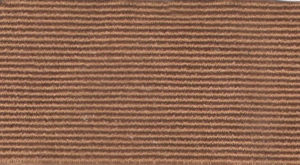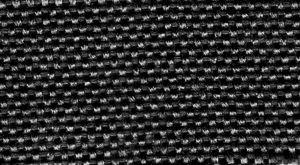
Arabian Dates | Premium Nuts & Dry Fruits | Traditional Spices

Arabian Dates | Premium Nuts & Dry Fruits | Traditional Spices

Arabian Dates | Premium Nuts & Dry Fruits | Traditional Spices
Our story began in 2010, when AHDIA Group entered as a niche foodstuff import/export giant in UAE market with its own brand name ‘ AHDIA Nuts n’ Dates’ in Hamriyah Free Zone, Sharjah, United Arab Emirates. Today, we are a market leader in the packaging and processing of supreme quality dates, dry fruits and traditional spices. Our world class facilities located in Dubai, Saudi Arabia and Kerala are the prime definitions of technological advancement and automation which offer you high quality and nutrients preserved dates, dry fruits and spices which match with international quality standards.
As the name AHDIA Nuts n’ Dates signifies, AHDIA Group offers delicious Dates which are handpicked mainly from Saudi Arabia and other places like Iran, Iraq and Jordan. We are specialized in distributing superior and fine quality date fruits and its derivatives with operations based in India and Middle East markets.




















At AHDIA Nuts n’ Dates we offer a wide spectrum of dry fruits which are very delicious and a storehouse of various nutrients. In fact, our passion goes beyond nuts, and into processed seeds, raisins and apricots to name a few, thus taking wholesome snacking to a different level. Our capabilities extend to cater markets requirements for dry, roasted, fried and coated nuts to whet every appetite and satisfy every taste.

The Almond (Prunus Amygdalus), is a species of tree native to the Middle East and South Asia. “Almond” is also the name of the edible and widely cultivated seed of this tree. The almond is a nutritionally dense food and is a rich source of vitamin E, containing 26 mg per 100 g. They are also rich in dietary fiber, B vitamins, essential minerals such as magnesium, copper, manganese, calcium, and potassium as well as monounsaturated fats and polyunsaturated fats, fats which potentially may lower LDL cholesterol. Typical of nuts and seeds, almonds also contain phytosterols such as Beta-sitosterol, stigmasterol, campesterol, sitostanol, and campestanol, which have been associated with cholesterol lowering properties. Potential health benefits, which have not been scientifically validated, include improved complexion and possibly a lower risk of cancer.


Ficus Carica is an Asian species of flowering plants in the mulberry family, known as the Fig (Anjeeer). Native to the Middle East and western Asia, it has been sought out and cultivated since ancient times, and is now widely grown throughout the world, both for its fruit and as an ornamental plant. The species has become naturalized in scattered locations in Asia and North America.Figs can be eaten fresh or dried. Most commercial production is in dried or otherwise processed forms, since the ripe fruit does not transport well, and once picked does not keep well.


Apricots are beautifully orange colored fruits full of beta-carotene and fiber that are one of the first signs of summer. Although dried and canned apricots are available year-round, fresh apricots with a plentiful supply of vitamin C and are in season in North America from May through August. Apricots contain a number of potent antioxidants which is a good source of both vitamin A (from beta-carotene) and vitamin C. Apricots are rich in other antioxidants too, including polyphenolic antioxidants like flavonoids. Diets rich in flavonoids and the other types of polyphenols found in apricots have been linked to reductions in heart disease in humans, as well as other potential health benefits.


The Cashew (Anacardium Occidentale) is served as a snack or used in recipes, like other nuts, although it is actually a seed. Originally native to northeastern Brazil, the tree is now widely grown in tropical regions, Vietnam and Nigeria being major producers. The fats and oils in cashew nuts are 54% monounsaturated fat (18:1), 18% polyunsaturated fat (18:2), and 16% saturated fat (9% Palmitic Acid (16:0) and 7% Stearic Acid (18:0). Cashews, as with other tree nuts, are a good source of antioxidants. Alkyl phenols, in particular, are abundant in cashews. Cashews are also a source of dietary trace minerals copper, manganese, magnesium and phosphorus.






















Watermelon seeds are low in calories and are nutrient dense. When roasted, they’re crispy and can easily take the place of other unhealthy snack options. they are also sources of high quantity of Magnesium, Iron and Folates. Watermelon seeds also provide a good source of both monounsaturated and polyunsaturated fatty acids — 0.3 and 1.1 grams, respectively.According to the American Heart Association, these fats are useful in protecting against heart attack and stroke, and lowering levels of 'bad' cholesterol in the blood.

India produces a wide range of spices. At present, production is around 3.2 million tonnes of different spices valued at approximately 4 billion US Dollars, and holds a prominent position in world spice production. Because of the varying climates – from tropical to sub-tropical to temperate-almost all spices grow splendidly in India. In reality almost all the states and union territories of India grow one or the other spices.
AHDIA started its operations in spices in way back in 2010 as an exporting company in Dubai, UAE. This 7 plus years of tradition in trading of spices and herbs enabled AHDIA Group to venture into the niche areas of Spices and Oil processing in this 2016. Now we emerge as the flagship business house for the development and worldwide trading of Indian spices.

Basil also known as French Basil or Sweet Basil or Tulsi is an erect glabrous herb, 30-90 cm high is indigenous to India. The leaves of basil have numerous oil glands with aromatic volatile oil. The herb bears cluster of small white lipped flowers in racemes. The freshly picked bright green leaves turns brownish green when dried and become brittle and curled. The major types are American Basil, French Basil, Egyptian Basil and Indian Basil.


Black Pepper is the dried mature berry of Piper nigrum, a climbing, perennial shrub mostly found in hot, moist region of Southern India. It has straight upward growing main stem and have lateral shoots from the axils of the leaves having shorter inter nodes without adventitious roots. In such branches the terminal buds get modified into an inflorescence (spike) and the auxiliary buds continue further growth.The specie is naturally self-pollinated and pollen dispersal is aided by the presence of water droplets. Fruit is a single seeded drupe often called berry. It is spherical in shape, green in colour, changing to red on ripping.


Cambodge is a tropical fruit commonly known as ‘Malabar Tamarind’ is a medium size evergreen dioecious tree with rounded crown and horizontal or drooping branches attaining a height of 18 mtrs. Fruit is a berry having a size of an apple, yellow or red, 6 to 8 grooves, forming blunt lobes with tough rind, 6 to 8 seeds and succulent arils. Fruit is weighing 50 to 180 gms.


Cardamom is a perennial herb with subterranean rhizomes and 50-140 aerial leafy shoots. Each shoot has height of 1.7 to 2.6 mtr and possess 9 to 13 leaves in each tiller. Leaves are glabrous on both sides with a prominent mid-rib. Inflorescence is a condensed spike with yellowish perianth. Each spike has 10-15 fruits. Fruit is round or oval shape, capsule with reddish brown colour. Each capsule is trilocular with many seeds.


Celery is an umbelliferous, aromatic, herbaceous plant grown for its leaves, seeds, oleoresin and essential oil. Celery plant is usually 30-60 cm high, erect with conspicuously jointed stems, bearing well-developed leaves on long expanded petioles. The rigid fruit is small, ovoid, 1 to 1.5mm long, 1 to 2mm in diameter, contains a small brown seed.


Cinnamon is the dried inner stem bark of Cinnamomum Verum. Cinnamon plants are grown as bushes. When the plants are of two years age, they typically measure at about 2 meter in high and 8-12 cm at the base. It is at this stage they are ready for harvesting.


Clove Buds are the air-dried unopened flower buds obtained from evergreen medium sized tree. The tree grows to a height of 10-12 mtrs and start flowering in about 7 years. It continues to produce flower buds for 80 or more years. It is a valuable spice of the orient. Clove clusters are plucked by hand when the buds are fully developed with a pronounced pink flush and then dried over several days in the sun. Unopened flower buds, leaves and stalks yield essential oil.


Coriander plant is a thin stemmed, small, bushy herb, 25 to 50 cm in height with many branches and umbels. Leaves are alternate, compound. The whole plant has a pleasant aroma. Inflorescence is a compound umbel comprises 5 smaller umbels. Fruit is globular, 3 to 4 mm diameter, when pressed break into two locules each having one seed. Fruit has delicate fragrance; seeds are pale white to light brown in colour.


Cumin is the dried, white fruit with greyish brown colour of a small slender annual herb. The surface of the fruit has 5 primary ridges, alternatively has 4 less distinct secondary ridges bearing numerous short hairs. The plant is 15 to 50 cm high. The aromatic seed like fruit is elongated, ovoid, 3 to 6 mm long, slightly bitter and has a warm flavour. The flowers are white or rose coloured in small umbels.


The leaves of curry leaf tree are a spice. The tree is an aromatic deciduous one, five meter in height, 15-40 cm in diameter. It is cultivated mainly in homesteads but to a certain extent on a plantation scale.


Ginger is the dried underground stem of the herbaceous tropical plant grown as an annual. The whole plant is refreshingly aromatic and the underground rhizome, raw or processed, is valued as spice. Ginger is a slender perennial herb, 30-50 cm tall with palmately branched rhizome bearing leafy shoots. The leafy shoot is a pseudostem formed by leaf sheath and bears 8 to 12 distichous leaves.


Mustard is an annual herb cultivated as oil seed crop or as vegetable or as fodder, of which, 3 species are known for its condiment value. They are pale yellow or white mustard (Brassica Hirta), brown mustard (Brassica Juncea) and black mustard (Brassica Nigra). The leaves of the plant are alternate, long, bristly branched, petiolate, hairy on both sides. Flowers are small, yellow with 4petals, cruciform. Seeds are 1.5-3mm.


Nutmeg & Mace are two distinctly different spices produced from a fruit of an evergreen tree usually 9-12 mtr high. Mace is the dried reticulated ‘aril’ of the fruit and nutmeg is the dried seed kernel of the fruit. The trees are normally unisexual, bearing either male or female flowers. The male flowers are born in clusters, whereas female flowers are often solitary. Fruit is a fleshy drupe, spherical in shape, pale yellow in colour with a longitudinal groove in the centre. When the fruit mature it burst open along the groove exposing the bright attractive mace, covering the hard black, shiny shell of the seed called nutmeg.


Saffron, the most expensive spice in the world is derived from the dry stigmata of the plant Crocus Sativus. The plant is a bulbous, perennial with globular corms, 15-20 cm high. It has 6 to 10 leaves present at anthesis, one to two flowers with a lilac-purple colour with perianth segments of 3.5 – 5 cm and style branches of 2.5 – 3.2 cm. The yellow style is deeply divided into three branches and the stigmata are bright red. Flowers are arising directly from the corms. Flowers have tri-lobed stigma, which along with the style tops yield the saffron of commerce.


Turmeric is the boiled, dried, cleaned and polished rhizomes of Curcuma Longa. The plant is a herbaceous perennial, 60-90 cm high, with a short stem and tufted leaf. There are 7 to 12 leaves, the leaf sheaths forms the pseudo stem. 1-4 flowers are born in axil of the bract opening one at a time. About 30 flowers are produced in a spike. Seeds are produced in capsules and there will be one to numerous sunken capsules in an inflorescence.

Ground Floor, Mukkath Square
Near Nakshathra Gold and Diamonds
Market Road, Aluva – 683101



















































